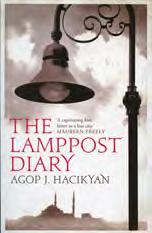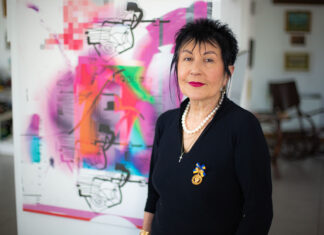By Edmond Azadian
The Lamppost Diary by Agop J. Hacikyan
This is the fifth novel by the prolific and popular writer, Agop Hacikyan. It comes through the experience and mastery of a novelist weaving together an eternal love story and a particular social order between World War I and World War II Istanbul, where minorities are restricted to a code of conduct of fear and persecution.
The author confesses in an interview that “every novel is autobiographical in that the author chooses his words according to what he has seen, lived or even imagined…Fiction partly comes from experience and imagination — both merge and then suddenly that experience turns fiction. In The Lamppost Diary, there is a lot of fiction as well as many episodes based on reality.”
This book does not have the traditional structure of his previous novels. It is more fluid and it reads like an actual diary, although without losing its focus.
The narrative revolves around three axes. The first is the loss of a sister at a very young age, bringing home the finality of death, which becomes a permanent obsession for the hero Tomas to grapple with. The other theme is the hero’s love story with a White Russian immigrant girl, Anya, within the context of coming of age of a young man, with sexual fantasies and frustrations. All these personal and family interactions take place within the broader theme of Turkish society where the minorities are terrified with the history of the genocide in their past and are harassed with an uncertain future imposed on them at the time.








